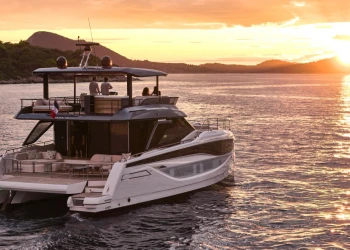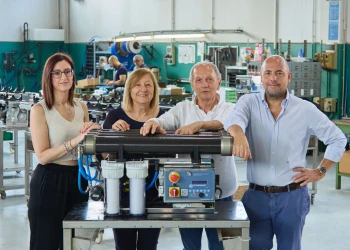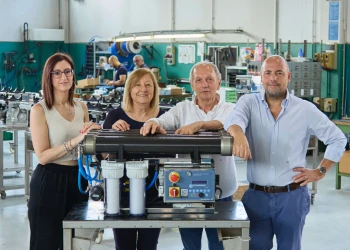
HP Watermakers is customising the interface of desalinators on the new Wajer 77s
HP Watermakers is customising the interface of desalinators on Wajer 77s
A word in advance: the term API, an acronym for Application Programming Interface, indicates a set of definitions and protocols for the creation and integration of software applications. APIs allow products or services to communicate with other products or services, thus simplifying app development and allowing for significant savings.
“The boating industry is the field for which we have developed the specific API files for our watermakers,” explains Gianni Zucco, CEO of HP Watermakers. “With these protocols, we can offer the possibility of customising their management software. Our standard is to provide the shipyard with a very complete file, where we have included not only the instructions for use, but absolutely everything, from electrical diagrams to video tutorials to directly manage any emergencies. In the nautical world, a bit like what happened in the more exclusive automotive world, setting up increasingly personalised helm stations is becoming more and more common. Commands and symbols are defined by the shipyard, which no longer wants to resort to classic monitors and their standards. As occurs in supercars, shipyards choose panels with customised shapes, graphics and controls.”
An example of this trend is the specific request made by the Dutch shipyard Wajer Yachts. It has chosen to fit the next five Wajer 77s it is currently building with HP Watermakers RP Tronic SC140 watermakers. It has also asked the Italian company to have the option of adapting their management software to a customised panel that does not include all the ancillary functions of the standard, but only the ones in their project, with the possibility of interfacing it with the rest of the on-board services and equipment.
“This request gave rise to the idea of developing API files dedicated to our watermakers which would allow shipyards, but also individual owners during the yacht construction phase, to customise their protocols for interfacing our machines with the rest of the on-board systems,” says Gianni Zucco. “Obviously, it would have been possible to respond to the single request from the Wajer Yachts shipyard, but at HP Watermakers we wanted to take the opportunity to develop a solution that would allow this sort of customisation to be managed more easily and quickly in the future because, as I said, we believe it will be an increasingly popular trend in the future. In practice, each shipyard will be able to customise its watermaker management systems very easily and quickly in order to interface them with the rest of the boat’s facilities and the related management software. For Wajer Yachts, the API protocol was developed internally by our technicians, but it will soon be possible to release it to any shipyard that requests it, with the possibility that its technicians will directly manage the customisation through a simple and intuitive process."
The watermakers of the RP TRONIC® range are, to date, the only automation system for watermakers: users can essentially avoid going to the engine room to adjust the watermaker, because the machine does it automatically. The constant pressure required for desalination will no longer be an issue, even if the sea water varies in salinity and temperature, therefore in density and, consequently, the pressure inside the desalination system varies. RP TRONIC® completely solves this problem because it installs a very high precision motorised and automatic micrometric valve that can automatically adjust the pressure to optimal levels, so the watermaker will work more efficiently and longer without the need for further manual interventions.
The Wajer 77 fast cruiser is the flagship of this Dutch shipyard: a 23.50-metre yacht designed to be enjoyed outdoors, but also suitable for long-range sailing. Superyacht finishes are combined with cutting-edge technology: a very elegant exterior line, a deck plan with two large relaxation areas at the bow and stern, while inside there are four large ensuite cabins. The yacht has three Volvo Penta IPS 1200 D13, 900 hp each, reaching a maximum speed of 37 knots; alternatively, three IPS 1350 will deliver a cruising speed of 26 knots with an average consumption of about 300 l/h.










